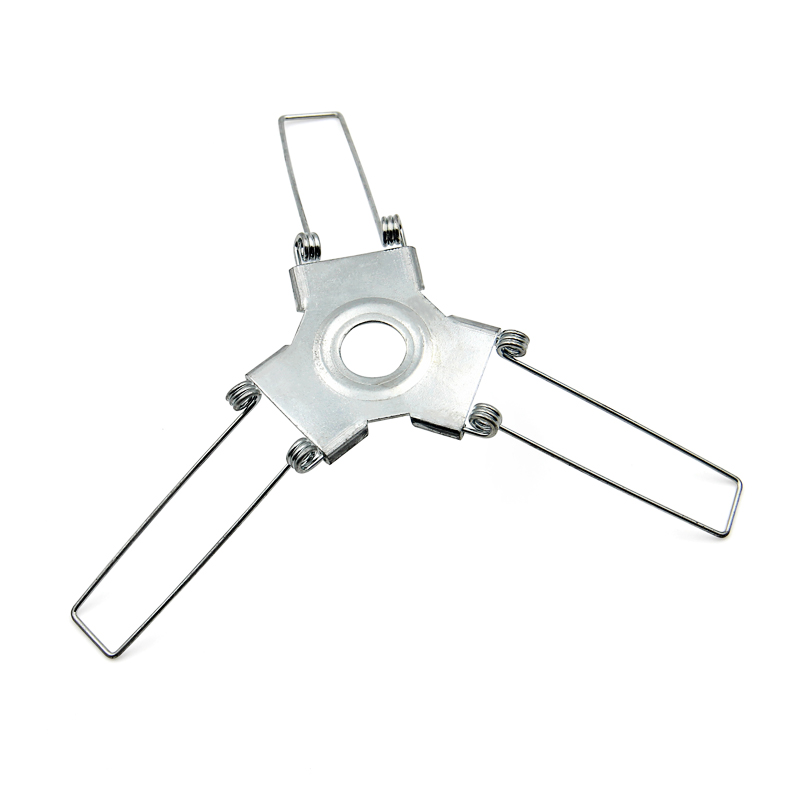For high-performance applications that generate a significant amount of heat, efficient cooling is paramount. Overheating can lead to decreased performance, reduced lifespan, and even system failure. That's where CNC machining aluminum heatsinks come into play. These precision-engineered components effectively dissipate heat and maintain optimal operating temperatures for various applications, from electronics to automotive and industrial equipment.
Why Choose CNC Machining Aluminum Heatsinks?
Superior Thermal Conductivity: Aluminum is known for its exceptional thermal conductivity, allowing heat to transfer quickly and efficiently from the heat source to the heatsink.
Lightweight Design: Aluminum is lightweight compared to other metals, reducing the overall weight of the system and enabling easier installation and transportation.
Cost-effectiveness: Aluminum is readily available and cost-effective, making it an economical choice for heatsink production, especially for large-scale manufacturing.
Customizable Designs: CNC machining enables the creation of complex heatsink designs with precise dimensions, fin geometries, and surface areas tailored to specific cooling requirements.
Corrosion Resistance: Aluminum heatsinks can be treated with protective coatings or anodization to enhance their resistance to corrosion and improve longevity.
Compatibility: Aluminum heatsinks are compatible with a wide range of electronic, automotive, and industrial systems, ensuring their versatility and applicability across different industries.
CNC machining aluminum heatsink
Design Considerations
Designing an effective CNC machining aluminum heatsink requires careful consideration of various factors. Here are key aspects to focus on.
Heat Source Analysis
Before embarking on the heatsink design process, a thorough analysis of the heat source is crucial. Factors such as power consumption, heat dissipation rate, and operating temperature range must be assessed to determine the optimal heatsink design parameters.
Fin Geometry and Surface Area
The geometry of the heatsink fins significantly impacts its cooling efficiency. The size, shape, and spacing of the fins influence the overall surface area available for heat transfer. Increasing the surface area improves the heatsink's ability to dissipate heat effectively.
Base Thickness and Contact Area
The base of the heatsink should be thick enough to provide adequate structural support and ensure optimal contact with the heat source. Maximizing the contact area between the heatsink and the heat-generating component enhances heat transfer efficiency.
Airflow and Forced Convection
Consideration should be given to the airflow conditions surrounding the heatsink. Optimizing natural convection or incorporating forced convection methods, such as fans or liquid cooling, can significantly enhance heat dissipation.
Material Selection
While aluminum is a popular choice for CNC machining heatsinks, there are different grades and alloys to consider. The specific material selection depends on factors like thermal conductivity, weight constraints, and environmental conditions.
FAQs
Can aluminum heatsinks be used for high-power applications?
Yes, aluminum heatsinks are commonly used for high-power applications. Their excellent thermal conductivity and customizable designs make them suitable for efficiently dissipating heat generated by power-hungry systems.
Are CNC machining aluminum heatsinks only used in electronics?
No, CNC machining aluminum heatsinks find applications in various industries beyond electronics. They are also widely used in automotive, aerospace, telecommunications, and industrial sectors, where effective heat dissipation is critical.
Are there alternatives to aluminum for heatsink manufacturing?
Yes, besides aluminum, other materials like copper, stainless steel, and certain ceramics are also used for heatsink manufacturing. The material choice depends on factors such as thermal conductivity requirements, weight constraints, and cost considerations.
Can heatsinks be used without forced airflow?
Yes, heatsinks can dissipate heat through natural convection, which relies on the surrounding air for cooling. However, in situations where natural convection is insufficient, incorporating forced airflow methods, such as fans or liquid cooling, is recommended for better heat dissipation.
How do I determine the appropriate heatsink size for my application?
The heatsink size depends on factors such as the heat source's power consumption, thermal dissipation rate, and operating temperature range. Consulting with a thermal design engineer or using thermal analysis software can help determine the appropriate heatsink size for your specific application.
Are custom heatsinks expensive to manufacture?
The cost of manufacturing custom heatsinks depends on various factors, including the complexity of the design, the quantity required, and the chosen manufacturing method. CNC machining allows for cost-effective production, especially for large-scale manufacturing, making custom heatsinks an accessible option for many applications.
Conclusion
CNC machining aluminum heatsinks offer an effective solution for optimizing cooling performance in high-performance applications. Their superior thermal conductivity, lightweight design, and customizable nature make them ideal for efficiently dissipating heat generated by electronic, automotive, and industrial systems.
By considering key design aspects and leveraging CNC machining technology, heatsinks can be tailored to specific cooling requirements. As technology advances and demands for high-performance systems increase, CNC machining aluminum heatsinks will continue to play a crucial role in maintaining optimal operating temperatures and extending the lifespan of various applications.

.jpg)
.jpg)

